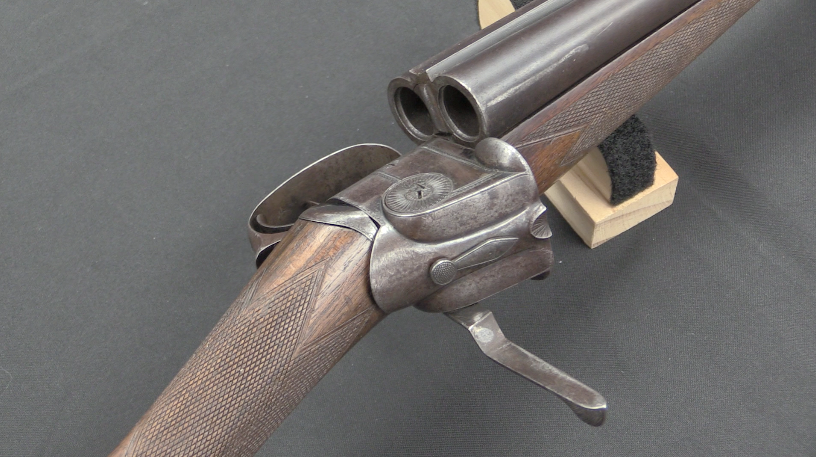The imposing heights of the Vercors Massif form a very impressive natural defensive position in the southeastern corner of France. It was here that the French Resistance had its largest set piece battle against German occupation forces, in the summer of 1944.
Plan Montagnards originally called for several thousand Allied paratroops to be dropped into Vercors when the landings in Normandy and Provence took place. The Provence landings were pushed back many weeks, however, and the Resistance forces streaming onto the plateau were left almost entirely on their own. One large airdrop of supplies and a single American OSS combat team were all the reinforcement they received.
French Maquisards repelled German probing attacks for about 6 weeks until in late July the final German offensive against the plateau came. It would see nearly 20,000 troops, units of tanks, glider-borne paratroops, and reserve mountain troops in a well coordinated assault that soundly defeated the lightly-armed resistance fighters.
Today we are on the plateau itself, and we will follow the battle across several specific sites, including the glider landings at Vassieux, the last stand of Section Chavant, the destroyed village of Valchevrière, and the hospital at Le Grotte de la Luire.
Want to see some original footage of these fighters taken in the weeks before the battle? It actually exists, and you can see it here:
https://youtu.be/zoq7QREIgB8



The book “Tears of Glory” by Michael Pearson paints a really heart rending picture of miscommunication and willful withholding of information on the part of de Gaulle’s Provisional Government that resulted in the resistance fighters not receiving an order to disperse during the several weeks before the main German attack, during which time those in London and Algiers knew that the original planned support was simply not going to happen.
Nice landscape but hard story…
Thank you for this video Ian. I read “Tears of Glory” about two months ago, so the details were still fresh in my mind as you showed the places that were described in the book, really bringing the sacrifice of the Resistance and the civilians supporting them to life. Keep up the good work!!!
The books The Jedburghs and Rogue Heroes have some detail about this battle and the OSS/SOE teams that worked with the Maquis, augmented by the SAS later in the war. They even parachuted jeeps in, although I don’t think into this part of France.
Still, like Ian said, when a couple of hundred Luftwaffe Fallschirmjaeger turn up in your village unexpectedly, you don’t have a lot of option, or chances.
Moving story, well explained and documented by showing relevant locals. This is good thing to do for general awareness of North American populace. The war was (is) not a cakewalk for sure – especially for civilians.
Coincidentally and unfortunately, not all French were inclined to resist German occupation. In fact, some to contrary participated in German arms, most notably division Charlemagne.
https://en.wikipedia.org/wiki/33rd_Waffen_Grenadier_Division_of_the_SS_Charlemagne_(1st_French)
They were some of the fiercest defenders of Berlin facing full onslaught of Red Army. They fought to the last man. This is what dedication and sense of honor, although in wrong direction, can do.
“Charlemagne(…)fought to the last man”
Question is: did they have another option?
Allies were more ready to accept surrender of Wehrmacht that SS units.
This was not only SS, but it consisted of men who volunteered to unit fighting for country hostile to their own.
Interestingly Charlemagne name might be understand as anti-German, though it is not obvious without knowing history of Germany/8th century.
Charlemange was Frankish king (in fact name France is derived from Franks) who issue order to execute Massacre of Verden: https://en.wikipedia.org/wiki/Massacre_of_Verden
which took place in Verden (location in Germany). Evaluation of this event varied through later history, both in regard to actual number and Charlemagne’s responsibility, but was is important that after NSDAP come to power, Alfred Rosenberg (responsible among other for interaction between said entity and historical events) was naming Charlemagne as Sachsenschlächter that is the one who slaughtered Saxons.
Thanks for valuable contribution.
“This was not only SS, but it consisted of men who volunteered to unit fighting for country hostile to their own.”
——————————————————–
This seem to describe well those who Ian describes as “Ukrainian turncoats”. They were not turncoats at all, but product of Russo-Ukrainian strive which began in 1917 by declaration of Free Ukrainian republic. They were in fact German allies.
https://en.wikipedia.org/wiki/Ukrainian_People%27s_Republic
The phrase “fighting to he last man” also nicely fits into destiny of Vlasov’s army fighting alongside Germans.
https://en.wikipedia.org/wiki/Andrey_Vlasov
After saving Prague in early hours of May 9th of 1945 they had little less left than to perish in hands of Red army. Let it be a solace to them that Czechs remember who was true liberator.
A small addition which resonates with French resistance in WWII. During my visit to Italo-Slovenian frontier I noticed memorials to fighting during the late period of that war. There was similarly, in no less spectacular scenery, tough struggle against occupying force.
Weeks before official German surrender there were established number of mini-republics lead by mostly Slovenian communist resistance. In fact Yugoslavs for large part, liberated themselves.
Today is 1 August, on this day in history: https://nationalinterest.org/feature/remembering-the-warsaw-uprising-august-1-1944-10995
Great PDF that details the battle. Good read. file:///C:/Users/colha/Downloads/azdoc.pl_after-the-battle-174-the-battle-of-the-vercors.pdf